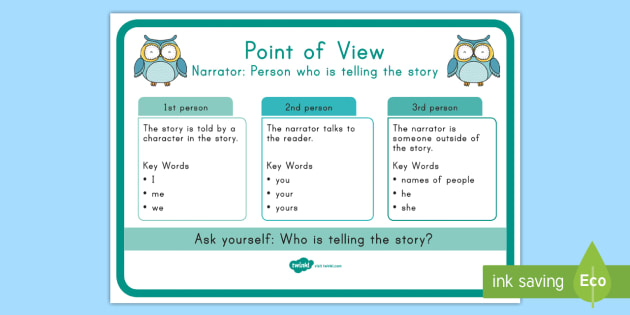

Note that the first-person point of view can be used without making the story entirely about the person speaking. Sometimes this point of view is achieved through the use of journals, diaries, or letters. When the protagonist is written in first-person voice, the audience gets an insight into the main character’s mind or thoughts. Meaning whoever I is - that’s who the story is about. In this POV, you may have the protagonist as the main character. When someone tells you a story verbally, they’ll often use this point of view to describe something they’ve witnessed themselves. The first-person point of view helps the reader vicariously live out the story through the eyes of the narrator. If you notice the narrator using first-person pronouns like I, me, mine, or myself, then you’re likely dealing with a story written in the first-person narrative. Here’s a bit on each POV so you can understand how they work and know when to use them in your writing. Each one has the potential to change the angle of your story. There are three distinct points of view that you should be aware of. Don’t think of it as a box to check in your list of story elements rather, consider point of view a literary device that can help your story shine. You can use it to reveal someone’s motivations or experiences. Point of view can be used as a tool to help express feelings and thoughts. What do you want your audience to know? Should they “hear” what’s going on inside the heads of the characters, or should they be viewing it from an outsider’s perspective? The point of view you choose determines this. Why is POV important?Īs mentioned above, the point of view you pick determines how a story unfolds. We’ll dive into the specifics of these later in this post, but for now, just know there are three to choose from. Point of view can be told from three different POVs: first-person, second-person, or third-person. Another way to look at it is the position from which someone or something like a scene or narrative, is being observed. It answers the question of “who” is telling the story. Point of view is essentially the perspective from which the story or narrative is being told. The point of view you choose will greatly affect the storytelling process and narrative.

Point of view (POV) applies when you’re talking or writing, but you’ll most likely see it referred to in fiction writing. We’ll also include examples of each type of point of view so you can see the differences. Here, we’ll cover everything you need to know about points of view, including what they are, why they’re important, and a breakdown of the three main types. That’s why we’ve put together this guide. Whether you’re writing a blog post, a novel, an academic report, or a simple email to a colleague, you have a decision to make.Įach POV has its benefits, but you’ll need to have an understanding of how they work before you can decide which one is right for your story.


 0 kommentar(er)
0 kommentar(er)
